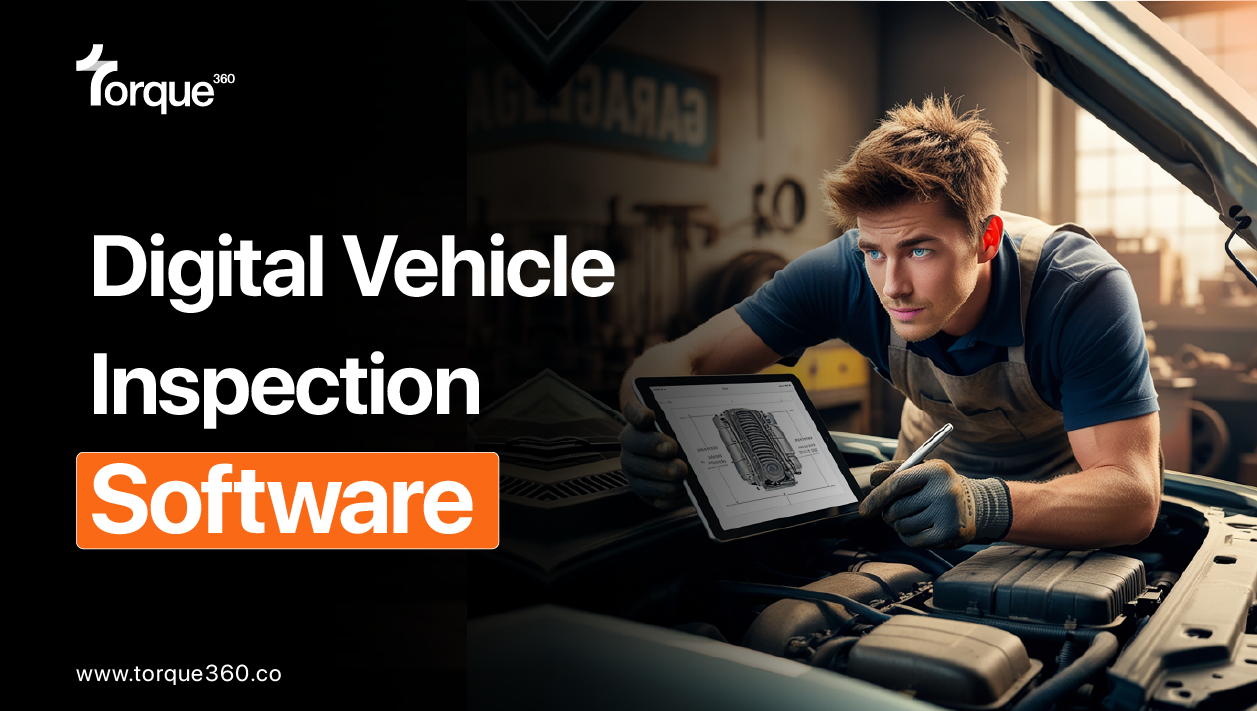In the automotive repair business, precision, speed, and efficiency are essential for success. Vehicle inspections are an integral part of ensuring a vehicle’s health and providing quality service. However, inspections alone are not enough. For the information gathered during an inspection to be truly valuable, it needs to be converted into actionable repair orders—clear instructions for mechanics to follow. This is where Torque360 Vehicle inspection management software stands out. With its built-in feature to instantly convert inspection findings into repair orders, it provides significant improvements in efficiency and accuracy in auto shops.
When using traditional, manual methods for vehicle inspections, there is always a risk of miscommunication, human error, and time delays. Whether it’s lost paper forms or delayed follow-ups, these issues can create chaos in a service shop, increasing the potential for mistakes, customer dissatisfaction, and even revenue loss. Torque360’s Digital Vehicle Inspection Software addresses these problems by automating the entire process, making it seamless and effective.
This blog will explore how Torque360 transforms inspection findings into actionable repair orders, how it improves the repair workflow, and why this feature is a game-changer for modern auto repair shops.
The Challenge with Traditional Inspection Methods
In the past, vehicle inspections were performed using paper forms, written notes, and verbal communications. After a technician completed the inspection, they would pass the information to the service advisor, who would then manually create repair orders based on the findings. This traditional method often led to mistakes, lost information, and delays in the repair process. There was a constant need for follow-up, which meant that the process was not as efficient as it could be.
Additionally, misinterpretation of handwritten notes, missed steps, or human oversight were common pitfalls. Sometimes, the technician would forget to flag an important issue or overlook critical details, leading to inaccurate repair orders. In the fast-paced environment of an auto repair shop, such mistakes can have significant consequences, leading to incomplete repairs, customer complaints, and additional costs.
Torque360’s Digital Vehicle Inspection Software solves these problems by automating the entire process. It eliminates manual data entry, ensuring that each inspection is recorded digitally, and findings are directly converted into actionable repair orders with no room for error or delay.
How Torque360 Transforms Inspection Findings into Actionable Repair Orders
The Torque360 Digital Vehicle Inspection Software is designed to be intuitive, user-friendly, and incredibly efficient. Once a technician completes an inspection, the software automatically analyzes the findings and converts them into a structured, easy-to-read repair order. This repair order includes all the critical information needed for the next steps, such as the specific problems identified, recommended repairs, and cost estimates.
For example, if an inspection identifies a problem with the brake system—perhaps worn brake pads, damaged rotors, or a fluid leak—the system will automatically flag this issue and create a repair order. This order will specify which parts need replacement, the labor required to fix the problem, and a rough cost estimate. Furthermore, this repair order can include additional details such as the time required for repairs and any potential follow-up recommendations.
By generating these repair orders automatically, Torque360 ensures that nothing is overlooked. The system prevents technicians from missing any crucial detail in the inspection, as each flagged issue is automatically converted into a corresponding action in the repair order. The result is an efficient, thorough, and error-free workflow.
Enhancing Shop Efficiency and Reducing Human Error
One of the major benefits of using Torque360’s Digital Vehicle Inspection Software is the reduction of human error. When using traditional paper-based inspections, there’s always the risk that something will be missed—whether it’s a key detail in the inspection or a step in the process. This leads to delays, mistakes, and frustration for both the repair team and the customer.
By automating the process of converting inspection findings into repair orders, Torque360 significantly reduces the chances of these errors occurring. Once the technician marks an issue during the inspection, the software instantly generates a detailed repair order with all the necessary information for the mechanic. This ensures that no step is skipped and no issue goes unnoticed.
Additionally, because the entire process is digital, all data is instantly available and can be shared across different parts of the shop. The repair order is immediately accessible by service advisors, mechanics, and even the parts department, allowing everyone involved in the repair process to work in sync. This not only reduces errors but also speeds up the entire workflow, enabling the shop to handle more vehicles in less time.
Speeding Up the Repair Process
Speed is a crucial factor in the automotive repair industry. The quicker a vehicle can be repaired, the faster it can be returned to the customer, which leads to increased customer satisfaction and higher throughput for the shop. Torque360’s automatic conversion of inspection findings into repair orders helps accelerate the repair process in multiple ways.
First, it eliminates the need for manual data entry, saving time and reducing the risk of mistakes. When the inspection is complete, the repair order is automatically generated, meaning there is no need for a technician to manually input the findings into a separate system. This frees up time for the repair team to focus on their core task—fixing the vehicle.
Second, because the repair order is ready immediately after the inspection, there’s no need for the service advisor to wait for the technician to complete their report. This speeds up communication with the customer, as the service advisor can immediately present the repair order and discuss the necessary repairs with the customer.
Finally, once the repair order is generated, it can be directly sent to the mechanic and parts department, reducing any potential delays in communication. This ensures that the repair process can begin immediately and the vehicle can be repaired faster, improving overall shop efficiency.
Real-Time Communication with Customers
One of the most significant challenges auto shops face is keeping customers informed about the progress of their vehicle repairs. Customers want to know the condition of their vehicle, the repairs needed, and the cost of those repairs. Torque360 makes this communication more transparent and efficient by providing service advisors with digital reports that they can easily share with customers.
Once the inspection is completed and the repair order is generated, service advisors can send the digital report to the customer in real time. This report can include not only the list of repairs needed but also photos, videos, and detailed descriptions of the issues. By using visuals, customers can see exactly what needs fixing, which helps build trust and reduces misunderstandings. Customers can approve repairs quickly because they have all the information they need at their fingertips.
In addition, customers can review their vehicle’s inspection findings remotely, through email or a customer portal, which streamlines the approval process. This speeds up the entire repair cycle and minimizes wait times for the customer, leading to higher customer satisfaction.
Benefits of Improved Repair Workflow
The combination of faster, more accurate inspections and the ability to quickly convert inspection findings into repair orders brings numerous benefits to auto shops. First and foremost, it leads to faster repairs. Shops that use Torque360’s Digital Vehicle Inspection Software can complete more jobs in less time, improving overall shop efficiency and revenue.
Second, by reducing errors and improving the accuracy of repair orders, Torque360 helps ensure that repairs are done right the first time. This reduces the number of callbacks and rework, which not only saves time but also enhances customer satisfaction.
Finally, by improving communication between the technician, service advisor, and customer, Torque360 builds a more transparent and efficient service process. Customers appreciate the quick and clear communication, which fosters trust and increases the likelihood of repeat business.
Conclusion
In the fast-paced world of automotive repair, the ability to quickly and accurately convert inspection findings into actionable repair orders is crucial for ensuring that a shop runs smoothly. Torque360’s Digital Vehicle Inspection Software provides a solution to this challenge by automating the process and eliminating human error. The software not only speeds up the workflow but also improves accuracy, enhances communication with customers, and boosts overall shop efficiency.
By adopting Torque360, auto shops can reduce delays, increase throughput, and provide a higher level of service to their customers. The seamless integration of inspection findings into repair orders helps streamline the repair process and ensures that no issue goes unnoticed, ultimately resulting in higher customer satisfaction and increased business performance. For any auto repair shop looking to stay competitive and improve their service, Torque360’s Digital Vehicle Inspection Software is a must-have tool.





